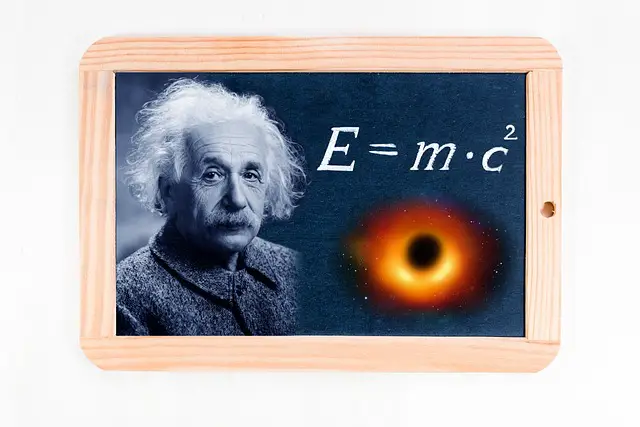Practicality refers to the application of theories or concepts in real-life situations while theory is a set of principles that explain phenomena. The key differences between these two include the nature of information, its purpose, approach, and scope.
What is practicality?
Practicality refers to the application of knowledge or skills to real-life situations. It’s all about taking what you’ve learned and putting it into practice in a tangible way. In other words, practicality is concerned with how things work in reality rather than just in theory.
For example, if someone takes a cooking class and learns about different cooking techniques, ingredients and recipes but never actually cooks anything themselves, they may have theoretical knowledge of cooking but lack practical experience. On the other hand, someone who cooks regularly at home may not know all the technical terms or scientific explanations behind why certain foods react differently when cooked but still has practical knowledge that allows them to prepare delicious meals.
In essence, practicality involves hands-on learning where we can see immediate results from our efforts. It enables us to develop skills that can be applied directly to our lives and careers.
What is theory?
Theory is a well-established concept that has been used across various fields of study. It can be defined as a set of principles, concepts or ideas that explain the relationship between different phenomena. Theories are essential in helping us understand complex systems and structures.
In science, theories provide explanations for natural phenomena and help predict future outcomes. For example, the theory of evolution explains how different species have evolved over time.
In social sciences, theories help us understand human behavior by providing frameworks to analyze social interactions and relationships. For instance, the social learning theory explains how we learn from observing others through modeling behaviors.
Theories also play an important role in research by guiding investigations into new areas of inquiry. Researchers use theories to develop hypotheses and test them with empirical evidence.
Theoretical frameworks are crucial in advancing our understanding of the world around us and serve as building blocks for further research and development.
Practical Vs. Theory – Key differences
Practical and theory are two different approaches to learning, problem-solving and decision-making. The main difference between practicality and theory is that practical knowledge is based on experience, while theoretical knowledge is based on principles and concepts.
Practical knowledge involves the application of skills in real-life situations. It focuses on hands-on experiences rather than abstract ideas or concepts. In contrast, theoretical knowledge emphasizes conceptual understanding over practical application.
Another key difference between the two is that practical knowledge tends to be more context-specific than theoretical knowledge. Practical approaches are often tailored to specific situations or contexts, whereas theories tend to be more generalizable across a range of situations.
In terms of problem-solving, practical approaches tend to focus on finding solutions that work in practice while theoretical approaches seek explanations for why things happen as they do. While both approaches have their strengths and weaknesses, it’s important to understand when each approach may be most appropriate for a given situation.
Whether you choose a practical or theoretical approach will depend on your goals and the nature of the challenge at hand. By considering these differences carefully, you can make an informed decision about which approach best suits your needs.
What are some examples of Practical?
(Image by Pexels from Pixabay)

Practical refers to any activity or approach that is based on real-world experience and can be implemented in a practical way. Here are some examples of practical:
Cooking: Cooking is a practical skill that involves hands-on experience, trial and error, and experimentation. It requires knowledge of ingredients, techniques, equipment, timing, and creativity.
Gardening: Gardening is another example of a practical skill that involves working with plants, soil, water, sunlight and weather conditions. It requires planning skills as well as physical work.
Driving: Driving is an essential life skill that most people acquire through practice rather than theory alone. It involves mastering the basic rules of the road as well as developing good judgment while driving.
Carpentry: Carpentry is a hands-on trade that uses tools such as saws, hammers,and drills to build structures out of wood.
Plumbing: Plumbing also requires hands-on experience with pipes,fittings,valves etc., which help one learn how to install or repair plumbing systems properly.
These are just a few examples where “practice makes perfect” – they require actual engagement in order to gain proficiency in them!
What are some examples of Theory?
(Image by Stefan Schweihofer from Pixabay)

Theory is usually an abstract concept that seeks to explain a certain phenomenon or event. It provides a general framework for understanding how and why things happen in the world. There are different types of theories, ranging from scientific to philosophical.
One example of theory is the Theory of Evolution which explains how living organisms have evolved over time through natural selection. This theory was proposed by Charles Darwin and has since become widely accepted within the scientific community.
Another example of theory is Einstein’s Theory of Relativity which revolutionized our understanding of space and time. This theory challenged Newtonian physics and provided new insights into gravity, energy, and mass.
In economics, there are several theories such as the Theory of Comparative Advantage which argues that countries should specialize in producing goods they can produce efficiently at lower costs than other countries.
In psychology, there is also the Psychoanalytic Theory developed by Sigmund Freud which focuses on unconscious mental processes as determinants of behavior.
Theories help us make sense out of complex phenomena in various fields by providing a conceptual framework that helps us understand underlying principles and relationships between variables.
What is the difference between theoretical and practical research?
Theoretical research and practical research are two different types of research methods, both aimed at achieving different objectives. The theoretical approach is more abstract in nature, seeking to develop new theories or expand upon existing ones. Practical research, on the other hand, is focused on finding solutions to real-world problems.
One key difference between these two approaches lies in their respective methodologies. Theoretical research typically relies on qualitative data collection techniques such as interviews, surveys and case studies to gather information that can be used to develop or test new theories. In contrast, practical research often employs quantitative methods such as experiments and statistical analysis to provide concrete solutions for specific problems.
Another important distinction between the two approaches is their scope. While theoretical research tends to focus on broader concepts and ideas that have general applicability across a range of fields or disciplines, practical research is usually much more targeted towards solving specific issues within a particular industry or field.
Despite these differences however, it’s worth noting that there’s often significant overlap between theoretical and practical research methods. Many researchers will use elements from both approaches in order to achieve the best possible results for their projects – whether they’re trying to create new theories or solve real-world problems through innovative applications of existing knowledge.
What are the three types of practical research?
Practical research is often used to address real-world problems and make informed decisions. There are three types of practical research: descriptive, experimental, and quasi-experimental.
Descriptive research involves describing a phenomenon or problem in detail. It helps researchers understand the nature of the problem being studied by gathering information through surveys, interviews, observations, or focus groups. This type of research can help identify potential solutions to the problem at hand.
Experimental research involves manipulating one variable while controlling others to determine cause-and-effect relationships. It typically involves randomly assigning participants into control and experimental groups and measuring how they respond to different stimuli or interventions. Experimental studies can be conducted in laboratory settings or in natural environments.
Quasi-experimental research is similar to experimental research but lacks randomization procedures for group assignment due to ethical concerns or logistical issues. Researchers use this type of study when it’s not feasible or ethical to manipulate variables as required by an experimental design.
Understanding the three types of practical research allows researchers to choose the most appropriate method for their specific situation based on their objectives and available resources.
Featured Image By – Gerd Altmann from Pixabay









